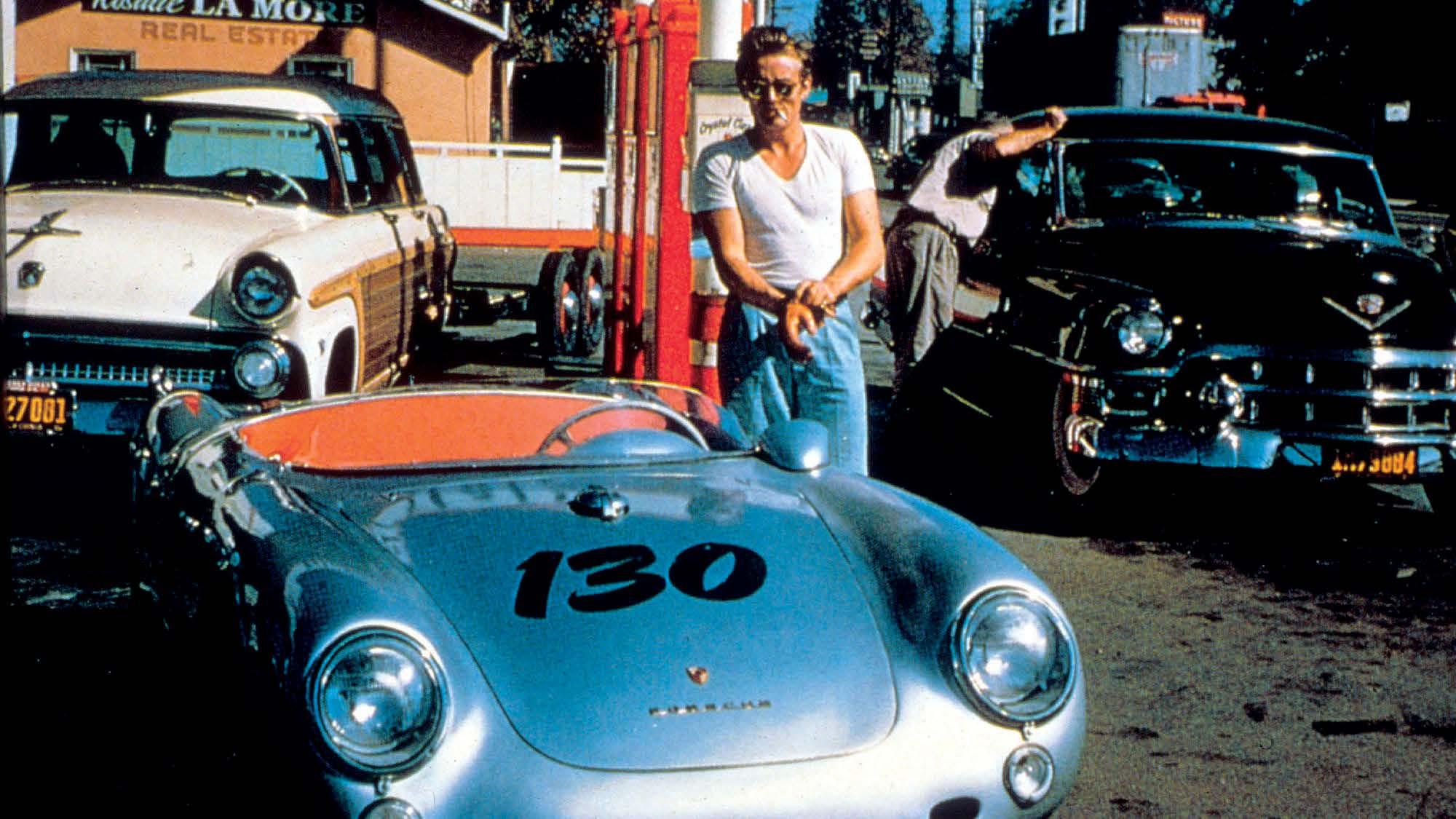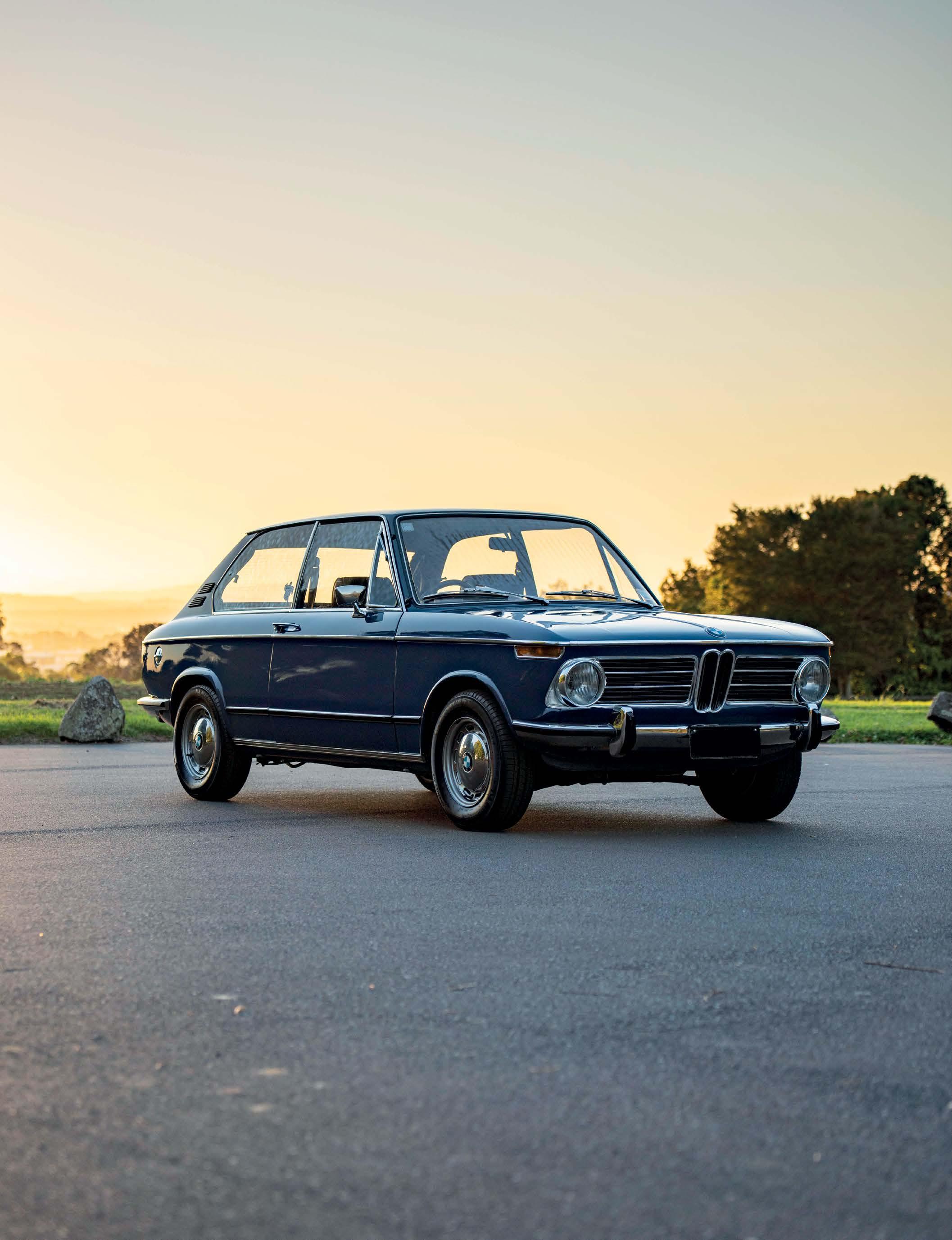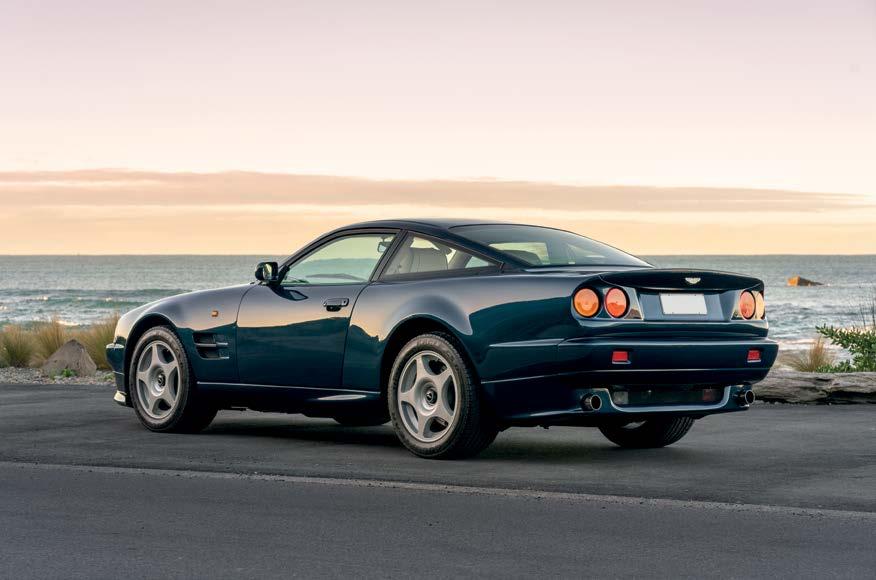
6 minute read
Visionary: The History of Porsche
James Dean filling up his 1955 Porsche 550 Spyder, that he owned for a little more than a week before his September 30, 1955, crash.

James Dean and his 1955 Porsche 550 Spyder. To many, the Porsche 550 Spyder is one of the most desirable looking cars Porsche has ever produced. Its uncomplicated design oozes sex appeal and looks as happy on the racetrack as it does on the open roads.
In his heyday, movie icon James Dean owned a 550 and he nicknamed it ‘Little Bastard’ – on reflection, this may not have been a good idea as it ended up killing him. Already a Porsche 356 owner, Dean moved to the 550 when he was filming Rebel Without a Cause. However, not satisfied with the standard look, he called up movie car maker George Barris (Munster Koach and 1966 Batmobile) to customise it. Barris gave it tartan seats, two red stripes over the rear wheels and put the number ‘130’ on its doors, hood and engine cover. Certainly nothing out of the ordinary there, but then things got a little strange. On September 23, 1955, Dean met actor Sir Alec Guinness (whose most famous role was Obi-Wan Kenobi) who told him that the car had a ‘sinister’ appearance. Guinness allegedly said, ‘If you get in that car, you will be found dead in it by this time next week.’ Seven days later, Dean was killed in ‘Little Bastard.’

September 30th, 1955, Dean died on his way to a race in Salinas, California. He was only 24 (and in his prime). His ‘Little Bastard’ 550 Spyder collided head-on with a Ford Tudor that turned left in front of him at an intersection. George Barris paid US$2,500 for the 550 wreck. Soon after, the Porsche slipped off its trailer and broke a mechanic’s leg. Barris sold the engine and drivetrain to racers Troy McHenry and William Eschrid. While the two were both racing against one another (in cars that each had parts from the 550) McHenry lost control and hit a tree, killing him instantly while Eschrid was seriously injured when his car suddenly locked up and rolled as he approached a turn. Barris sold two tires from the 550 which were untouched in Dean’s accident. However, soon thereafter both simultaneously blew out causing the new owner’s car to run off the road. Next up, a couple of thieves thought they’d help themselves to parts off the 550 shell that Barris still owned. One of the thief’s arms was torn open trying to steal the steering wheel while the other was injured trying to remove the bloodstained tartan seats. Barris was then convinced by the California Highway Patrol to lend the mangled wreck to a highway safety exhibit. The first exhibit was unsuccessful as the garage that housed the car caught fire and burned to the ground (the 550 remained virtually unharmed). The next exhibition, at a local high school, ended abruptly when the car fell off its display and broke a student’s hip. Then, when ‘Little Bastard’ was being transported, the truck carrying the car lost control causing the driver to fall out and somehow get crushed by the car. The 550 subsequently fell off two more transport trucks while travelling on the freeway, fortunately not injuring anyone. In 1966 (obviously sick of the Porsche by now); the California Highway Patrol sent it back to Barris; however, it mysteriously vanished en route and has not been seen since. Then, in 2005 the Volo Auto Museum in Chicago posted a US$1m reward for its purchase. In 2014 the museum received a call from a man claiming to know its whereabouts. He claimed to have witnessed his father and a few friends hide ‘Little Bastard’ behind a fake wall in Whatcom County Washington (Apparently, he was 6 years old at the time). He won’t say which wall until money changes hands, and the museum is doing its due diligence. But maybe, if recovered, the legend of Dean’s infamous Porsche will live on.
words by Dave McLeod

1948 Porsche 356 “No.1” Roadster, the first vehicle to bear the Porsche name.
It’s easy to say that the history of the Porsche automobile brand began on June 8, 1948 when the first vehicle to bear the Porsche name, the Porsche 356 “No.1” Roadster was registered. But the real Porsche story begins way back to the turn of the twentieth century.

Ferdinand ‘Butzi’ Porsche, grandson of Ferdinand Porsche. The foundation of this sports car manufacturer is built upon the life’s work of Professor Ferdinand Porsche. In 1900, German Bohemian automotive engineer Ferdinand Porsche had already designed pioneering innovations for the automotive industry. He had built an electric car with a wheel hub drive known as the Lohner-Porsche, (a vehicle which he would then base the world’s first all-wheel-drive passenger car on), and in the same year, he created a template for hybrid vehicles with the development of a mixed petrol-electric powertrain. However, in 1931, with financial backing from his son-in-law the Austrian advocate Anton Piëch and Adolf Rosenberger, Ferdinand Porsche returned to Stuttgart where he founded his own engineering office Dr. Ing. h.c. F. Porsche GmbH and recruited several former co-workers including Karl Rabe, Erwin Komenda, Franz Xaver Reimspiess, and his son, Ferry Porsche. One of their first assignments was from the German government to design ‘a car for the people’, which resulted in the Volkswagen Beetle, one of the most successful car designs of all time. Then, using parts from the Beetle, they subsequently created the first-ever Porsche, the 1939 Type 64 Berlin-Rome Rennwagon. This ‘BerlinRome Car’ was the beginning of Ferdinand’s idea for a sports car bearing the Porsche name, however, this dream was only realised by Ferry Porsche almost a decade later.

The first-ever Porsche, the 1939 Type 64 Berlin-Rome Rennwagon.
At the end of World War II, the VW factory at KdF-Stadt fell to the British. Ferdinand lost his position as chairman of the VW board and on 15 December of that year, was arrested for war crimes - but not tried. During his 20-month imprisonment, Ferry Porsche decided to build his own car, ‘because he couldn’t find an existing one that he wanted to buy’. And so the Porsche Type 356 was born. The first models were built in a small sawmill in Gmünd, Austria. The prototype car was shown to German auto dealers and when pre-orders reached a set threshold, production (with an aluminium body) by Porsche Konstruktionen GesmbH, began. The 356 was road certified in 1948 and in 1949, 52 cars were produced. Production of the 356 was taken over by Dr. Ing. h.c. F. Porsche GmbH in 1950, and Ferdinand commissioned Reutter Karosserie to produce the 356’s with a steel body. Two years later, Porsche constructed an assembly plant (Werk 2) across the street from Reutter Karosserie, which is now known as Porschestrasse. In 1952, the automaker released its most popular model yet, the 550 Spyder, and the brand has only continued to grow from there, with the 10,000th Porsche vehicle hitting the roads by its 25th anniversary. In 1963 the 901 was created. Penned by Ferdinand ‘Butzi’ Porsche, grandson of Ferdinand Porsche, it was to be the replacement for the 356. However, Peugeot claimed the rights to three-digit car names with zero in the middle, so Porsche changed the name, and the 911 moniker (arguably THE Porsche nameplate) was born. There are numerous 911s of note but in 1975 the Porsche 911 became Turbocharged and the 3.0 Turbo became the fastest car in Germany at the time. Porsche now produces many different models that deliver strong engine performance and offer a variety of unique comfort and convenience features that distinguish the Porsche brand.
words by Dave McLeod





